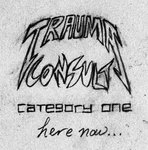Who first demonstrated the principles of electrosurgery?
Alex d'Arsonval, a French physicist
Who first produced an electrosurgical unit designed for human use?
William Bovie, a Harvard biophysicist
Who popularized the use of "the Bovie"?
Harvey Cushing, MD, the father of modern neurosurgery
Cushing is reknown for developing surgical techniques that reduced the mortality rate of brain surgery from 90% to under 10%.
What is Cushing's Disease?
Secondary hypercortisolism, from a pituitary tumor leading to ACTH-hypersecretion.
Cushing's Syndrome is a more general term, referring to any form of symptomatic glucocorticoid excess, whether from an adrenocortical tumor, or exogenous steroids.
What prestigious award did Cushing receive in his academic career?
The Pulitzer Prize, for his biography "A Life of Sir William Osler"
What is Ohm's Law?
Voltage = Current * Resistance
What is Impedance?
A measure of resistance to flow when using alternating current (AC)
A high cellular water content results in a low tissue impedance.
What is Alternating Current?
Current that cycles in direction at a specific frequency... this comes from a typical US wall outlet at rates of 60Hz.
Electrocautery utilizes direct current (i.e. battery-powered hand-held units), while electrosurgical units utilize alternating current.
What radiofrequencies cause neuromuscular stimulation?
Up to 100kHz
What radiofrequencies cause a generation of heat?
200kHz - 5MHz
What is the Joule-Lenz Law?
Heat dissipated = (Current-density)squared * Resistance * time
Current-density is current divided by cross-sectional area.
Thus, heat generated with electrosurgery is inversely proportional to the area of the electrode and proportional to the time of contact and the impedance of the tissue.
What is monopolar current?
Electricity flowing from a single electrode to the patient.
Monopolar units typically utilize a pencil-type probe that is hand operated. Laparoscopic monopolar cautery may be operated by a foot pedal.
What is a dispersive electrode?
A ground or grounding pad.
Why is a ground pad placed on the patient when using monopolar cautery?
It allows completion of the electric circuit through the patient back to the electrosurgical unit.
Does the size of the ground pad matter?
By being large, it disperses current over a greater surface area. If it were small (i.e. detached/poor contact), it could cause generation of enough heat to create a local burn.
What is bipolar current?
Electricity flows in a closed circuit between two closely placed electrodes (i.e. bipolar forceps or scissors). Current flow and injury to tissue is limited to the region between the electrodes.
Bipolar units typically allow the use of a lower voltage waveform than monopolar units to acheive hemostasis.
What are common modes used by monopolar electrosurgical units?
1. Cutting
2. Coagulation
3. Blend
What are the properties of a cutting waveform?
It uses a continuous (pure sine-wave), low voltage, high-frequency waveform (500kHz) that concentrates energy on a small area.
Instantaneous heating (100 degrees C) results in cellular evaporation at contact, with minimal damage to surrounding tissues.
What are properties of a coagulation waveform?
It uses a pulsed, higher-voltage waveform that allows for dispersal of energy deeper into tissue.
Heating is less (37- 60 degrees C), causing tissue dessication and protein denaturing, allowing for sealing of blood vessels.
What is fulgaration?
Surface coagulation, accomplished by a non-contact method of electrocautery.
What are the properties of a blend mode?
This is a combination of cutting and coagulation waveforms. The higher the blend, the higher the coagulation effects.
What happens to tissue impedance during coagulation?
As water evaporates and tissue dessicates, the tissue impedance increases, leading to increased coagulative effect.
This can also increase the potential of arcing of the current to a lower impedance tissue, leading to iatrogenic injury.
Remember, current flows in the path of least resistance.
What are special hazards seen with laparoscopic electrosurgery?
1. Insulation failure
2. Direct coupling
3. Capacitor coupling
Injury can occur to non-target tissue out of view of the surgical team!
What is insulation failure?
When a defect in the covering of the active electrode allows current to contact non-target tissue.
What is direct coupling?
When the tip of the active electrode comes into contact with another metal instrument in the surgical field.
What is capacitor coupling?
When stray current from an electrode develops by a storage of charge. This can be minimized by activating the active electrode only when it is in contact with target tissues and limiting the amount of time on the coagulation setting.
This can sometimes occur with devices that contain both plastic and metal, allowing for insulation of charge by the instrument or trocar.
For a resource that has some pretty decent illustrations, consider this online course at Valleylab.
Late... SG
Sources:
O'Leary's Physiologic Basis of Surgery, 3rd ed.
Jones CM, Pierre KB, Nicoud IB, Stain SC, Melvin WV. Electrosurgery. Curr Surg 2006; 63: 458-463.



